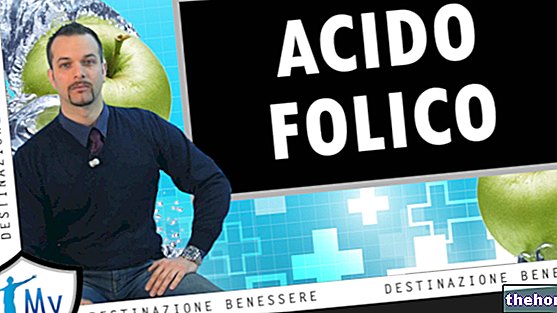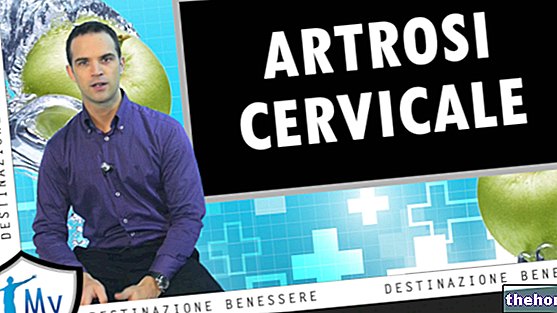As the name suggests, cold sores is an infectious disease characterized by the appearance of numerous blisters around the lips or in other areas of the face. This bullous manifestation, commonly called "fever on the lips", not only represents an annoying blemish, but is the recurring manifestation of a chronic infection. In fact, it is important to emphasize that the Herpes virus takes refuge in nerve cells, where it not only survives the immune system, but is not even eliminated with the use of drugs. For this reason, after the regression of the manifestations due to the initial infection, the virus can recur at any other time, even after a long time. In particular, the virus reactivates by taking advantage of the states of "weakness" of the organism and can so to return from time to time to manifest itself with the classic labial lesions.
We have seen that herpes of the lips is a viral disease, therefore caused by a virus. In most cases, the virus involved is herpes simplex type 1. More rarely, herpes labialis is caused by herpes simplex type 2, which is mainly associated with genital infection. Just as it happens in genital herpes, also in the labial infection after contagion the virus remains inside the organism. It is localized in particular in the nerve ganglia, where it is holed up without giving any sign of its presence. In some situations favorable to it. however, it can reactivate itself and trigger typical manifestations. For example, they can act as a "trigger" for periods of intense stress or overexertion, drops in immune defenses, particular moments in the female cycle, febrile episodes or intense exposure to light In such circumstances, the virus exits the nerve ganglia and travels back along the path it took at the time of the infection. Thus it reaches the end of the nerve ending, usually on the lips. Less frequently, herpetic lesions can form on the nose, chin, cheeks or palate.
The virus responsible for cold sores is easily transmitted by direct contact with the mouth or saliva of an infected person, typically through a kiss. Contagion can also occur indirectly, using contaminated objects, such as glasses, cutlery, lipsticks, razors and towels. Not only that: in the same subject, the virus, in a sort of self-inoculation, can also be transmitted to other parts of the body. For this, it is above all eye contact that must be avoided. During the episode of cold sores, therefore, care must be taken not to bring the hands from the mouth to the eyes. Otherwise, the virus could cause herpetic keratitis, a very serious ocular complication that can even lead to blindness.
Let's now see how cold sores manifest themselves. Initially, the virus heralds its arrival by causing a slight tingling and a feeling of tension on the affected lip or part of the face. Sometimes there is a slight sensation, somewhere between itching and burning, almost as if it were a tingling sensation. Other times the subject does not notice the arrival of cold sores until the characteristic vesicles appear. In fact, in a short time an eruption is formed consisting of many small bubbles, filled with a clear liquid and close to each other. In addition to being unsightly, these bubbles typically cause local pain, burning and itching. These blisters can persist for 6-7 days. If they burst, they give rise to a painful lesion and expose the skin to the risk of further infections, because they release the serum containing the virus. In the phase following the onset of cold sores, some people also experience flu-like symptoms such as fever, muscle aches, headaches and general malaise. A few days after the infection, the repair process of the lesions begins. The blisters dry out and form a yellowish crust that usually disappears without leaving visible marks and scars. Complete healing occurs within 7-10 days. At the same time, the virus spontaneously recedes and returns to "doze" in the nerve ganglion, waiting for a new opportunity to reactivate.
A medical examination is sufficient for the diagnosis of Herpes simplex infection. In fact, the observation of the affected party suffices. In suspected cases, it is possible to confirm the diagnosis by means of a blood test, to check for the presence of antibodies to Herpes simplex. In addition, it is possible to resort to direct virus isolation in cell cultures and amplification of viral DNA by PCR. Normally, however, these tests are not necessary.
Unfortunately, there is still no therapy that can solve cold sores once and for all. In fact, no drug is able to eliminate the virus from the nerve cells in which it takes refuge. However, it is possible to use some therapeutic measures to reduce the discomfort caused by the infection or to reduce the risk of infecting the partner. In particular, the treatment of cold sores involves the use of specific antivirals, generally in the form of creams or gels to be applied locally. Among the most used and effective active ingredients we mention aciclovir and penciclovir. Although these drugs do not greatly change the duration and extent of the disorder, they do provide some relief from symptoms. Therefore, precisely because a definitive cure is still missing, the ideal would be to anticipate trying to prevent relapses, or at least catch them in the bud. In fact, it should be noted that the maximum effectiveness of these antiviral drugs is obtained when the warning symptoms are still felt, that is, when there is that sense of itching and tension in the lips that precedes the appearance of the vesicles. If the infection is very extensive, the doctor may recommend taking antivirals orally. In some cases, the local application of ice can help reduce discomfort and swelling. In addition, it is possible to use specific patches to be placed on the lesions, which in addition to protecting them, thus reduce the risk of touching them and spreading the infection with the hands.
To prevent episodes of reactivation of the Herpes virus it is useful to protect the lips with a high protection stick when exposed to the sun, both in the mountains and at the sea or in the beauty center with artificial lamps. In the winter season, some predisposing traumas, such as cracks, can be avoided with the use of emollients such as lip balm. To prevent the spread of infection, however, it is essential to observe certain hygiene rules. First, it is therefore important to wash your hands often with soap and water. During lip infection, contact of the lips with other people's bodies should be avoided until the blisters have completely disappeared. Another important precaution to take is not to touch or scratch the blisters, but above all it should be avoided. subsequent contact with eyes, nose, genitals and other parts of the body. For the same reason, contact lenses should never be moistened with saliva before being worn. Infection, in fact, could spread to the eyes. Finally, to avoid contagion, towels, cutlery, razors, lipsticks and other objects that may come into contact with herpetic lesions should not be shared.




























